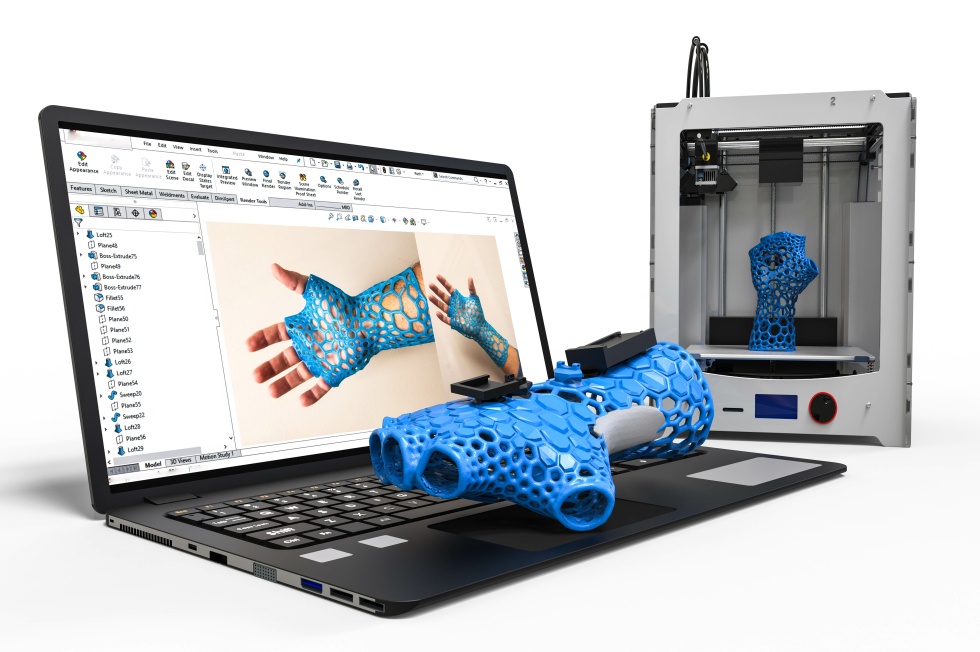Exploring 3D Printing's Expansive Role in Advanced Manufacturing and Trade
Discover how 3D printing is reshaping advanced manufacturing and expanding international trade, offering emerging opportunities for global industries.

In advanced manufacturing, 3D printing has emerged as a revolutionary technology, transforming production lines and trade dynamics across the globe. Initially viewed as a tool for simple prototyping, 3D printing has evolved to become a core component of advanced manufacturing, influencing trade patterns and unveiling emerging opportunities in numerous sectors. This shift towards 3D printing has profound implications for international trade, challenging traditional notions about production and distribution.
3D Printing and Advanced Manufacturing
Integrating 3D printing into advanced manufacturing represents a significant leap from traditional manufacturing methods. Known for its ability to produce complex designs with high precision, 3D printing has reduced production costs and time, making it a valuable asset in the manufacturing toolkit. The technology's flexibility in customization has also opened doors to new market opportunities, adapting quickly to consumer and industry needs.
- Reduction in Production Costs: 3D printing minimizes waste by using materials more efficiently compared to traditional manufacturing processes.
- Enhanced Product Customization: Allows manufacturers to offer products tailored to individual specifications without extensive retooling.
- Speed to Market: Accelerates the development process from design to final product, enabling faster response to market changes.

The Impact of 3D Printing on International Trade
The advent of 3D printing technology was initially thought to reduce international trade by enabling local production. However, research and trade data suggest otherwise. Studies from institutions like the University of California San Diego and the World Bank indicate that 3D printing has expanded global trade. For instance, the production of hearing aids via 3D printing technology saw an export increase of approximately 80% following its adoption.
Key Points in Trade Growth:
- Increased Export Capabilities: Countries that have embraced 3D printing in manufacturing sectors such as dental appliances and hearing aids have seen marked increases in exports.
- No Significant Localization Effect: Despite the ability for local production, the global trade of 3D printed products has increased, indicating the technology’s role in complementing rather than replacing existing manufacturing and trade frameworks.
- Advantages in Lightweight and Complex Products: The benefits of 3D printing are particularly pronounced in the trade of lighter and more complex items, which are cheaper to transport and more logistically feasible for international shipping.
Emerging Opportunities: New Markets and Sectors
As 3D printing technology continues to mature, it presents emerging opportunities in sectors previously unexplored. From aerospace components to customized medical devices and beyond, 3D printing is setting new benchmarks in production.
- Aerospace and Defense: 3D printing is utilized for parts that are lighter, stronger, and more complex than traditionally manufactured components.
- Healthcare Innovation: Custom medical implants and prosthetics tailored to individual patient needs, improving outcomes and personalization in healthcare.
- Automotive Advancements: Production of complex parts for automotive applications, reducing weight and improving fuel efficiency.
The Future of Trade and Manufacturing with 3D Printing
The narrative that 3D printing would simplify global supply chains and diminish international trade has not materialized. Instead, this technology has proven to catalyse trade growth, enhancing the global exchange of goods through advanced manufacturing capabilities. As businesses and industries adapt to these technological advancements, the role of 3D printing in international trade is set to grow, underscoring the importance of innovation in sustaining economic development.
For those navigating the import-export landscape, Export Portal offers a dynamic platform to explore these trends and capitalize on the opportunities presented by 3D printing in international trade.






Comments 0